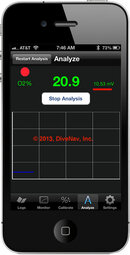drinksfromtap
Contributor
So, I've been reading a lot of the recent posts about the importance of analyzing your gas. The way I learned to do this in my Nitrox class was to calibrate the analyzer on a tank of air, then analyze the tank that you plan to dive. So, how do you make sure that the tank you're calibrating from is really full of air, particularly when you're using an analyzer that you don't own and don't know well? The analysis is only as good as the calibration. It's unlikely, but possible, to get a tank inadvertently filled with, say, banked EANx 36, calibrate your analyzer off a different tank of EANx 36 that's supposed to be air, and end up diving EANx 36 instead of air. Or, you could be intending to dive an EANx blend that analyzes low after inadvertently calibrating off a tank of banked EANx 32 and have the shop blow off some pressure and add more oxygen, putting at a significantly higher oxygen percentage than you intended to dive. Do you do any sanity checks to the calibration, like watching the readout on your analyzer drift back towards 20.9% after you're done analyzing your tank? Or consistently analyze at both the shop and before your dive (but if done again at the dive site, what air source do you use to re-calibrate)?
I admit that this is a somewhat unlikely scenario, but I'm interested in what you all do and if this is something you are or have been concerned about as well.
I admit that this is a somewhat unlikely scenario, but I'm interested in what you all do and if this is something you are or have been concerned about as well.




